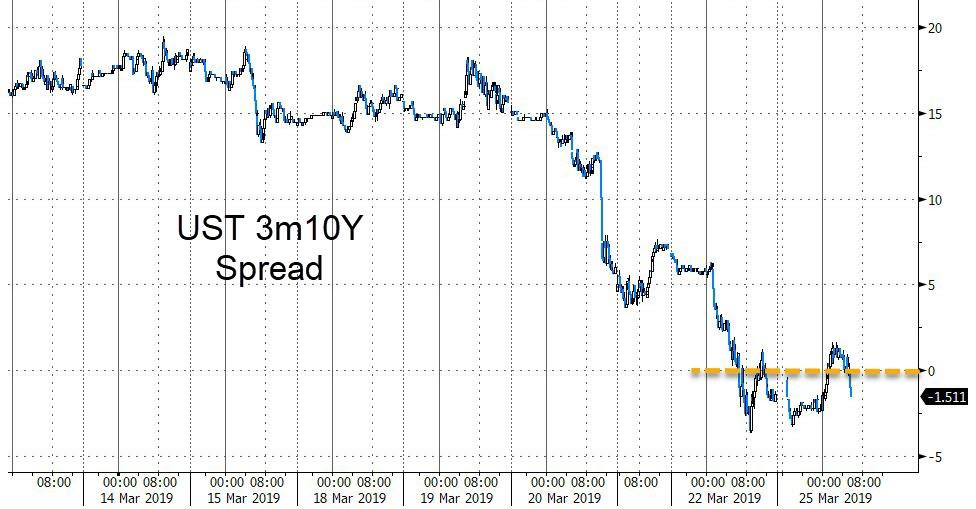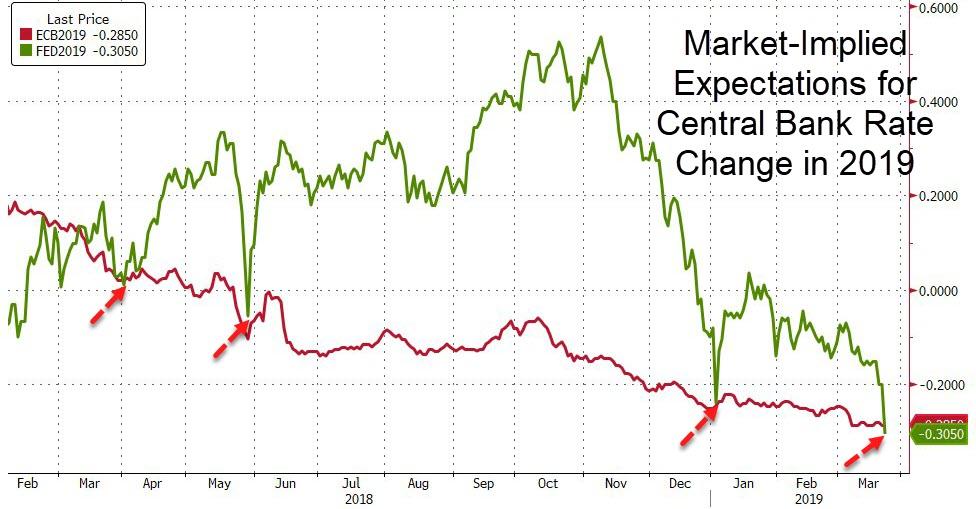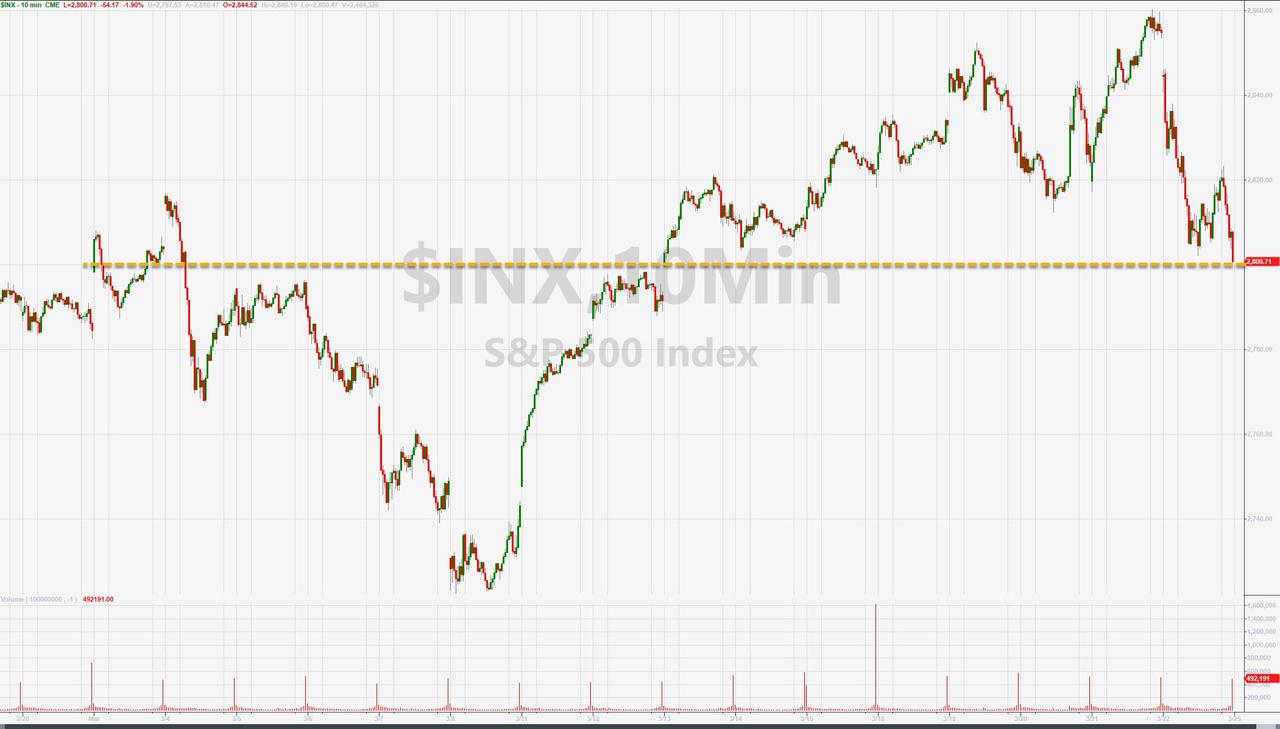Via Bloomberg’s Richard Breslow,
It isn’t all that meaningful to debate whether the inverted yield curve in the U.S. that occurred Friday will lead to a recession a year from now. Nothing is written in stone. Whether one comes to pass or not doesn’t validate nor negate the signal one way or the other.
The point is, it was a clear sign that investors perceive that there is trouble lurking now. And you need to trade accordingly. We aren’t talking about making a decision about investing in a new manufacturing facility or a share buyback. But whether it is better, here and now, to be looking to add to 10-year longs at 2.50% or fade the market against 2.40%.
It is a mistake to watch how the shape of the Treasury curve evolves and start parsing the U.S. data in isolation. Because if you do that, it is in fact reasonable to conclude that the market has probably overreacted. As has the Fed. If not in deed, in how they conveyed their message. They inadvertently transmitted a sense of panic, the assurances that the economy is in a “good place” notwithstanding.
[ZH: The market is now pricing an easier Fed in 2019 than ECB]
But it just isn’t possible to escape the fact that how the rest of the world is faring directly affects the U.S. economy and asset prices. Just how attractive U.S. assets and the dollar appear has to be judged through the prism of what are the global alternatives. Not to mention, where along the duration spectrum, the Treasury Department decides to finance the growing deficit.
The PMI data out of Europe really shook people up. The core country readings were horrid and sent bunds back below zero. They were the seminal data at the end of last week and had global repercussions, including for Treasuries and U.S. equities. Today’s IFO data from Germany seems to have lifted traders’ mood. It’s not a question of whether Germany was cured over the weekend. It’s of the need to just keep on reminding ourselves that these are markets that are excessively fickle. Which is another way of saying, it doesn’t take much to cause things to turn on a dime.
If you are watching 10-year Treasuries, the low in yield from the very beginning of the year is shaping up to be an enormous pivot level. It may seem far away, but really isn’t. If Friday’s move was real, you shouldn’t expect this level, circa 2.55%, to be breached. If bund traders conclude negative yields aren’t actually appropriate, we could easily see that Treasury pivot come into play. Overnight volumes in Treasury futures ran very high. There is a lot of interest at these levels. The market hasn’t been moving on air.
As far as equities are concerned, the S&P 500 traded conveniently down to and settled at its first major technical level at 2800.
It was instructive that I heard more people discuss how much further it can fall and still be “corrective.” Oddly fewer seemed to be arguing to take advantage of this “gift.” I can’t wait to see what will be written this evening.
Emerging-market currencies, gold, crude and the Dollar Index have all traded to meaningful technical levels. I won’t try to predict where everything will be at the end of the week. But it seems clear that when we close the books on the first quarter they won’t be here.
via ZeroHedge News https://ift.tt/2YiL0ka Tyler Durden


